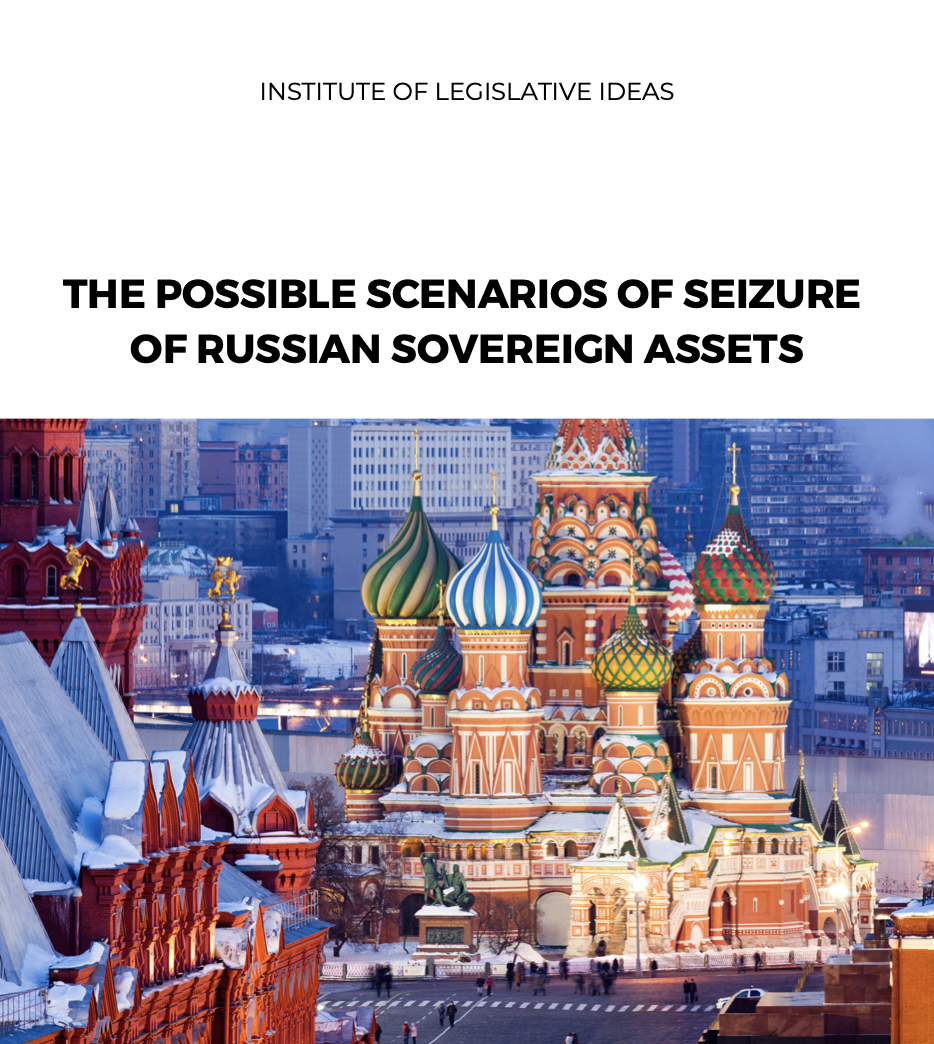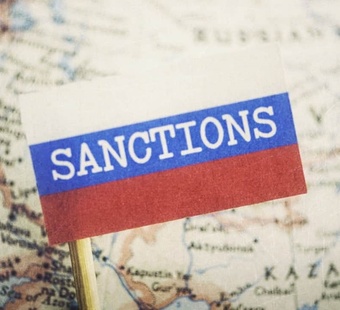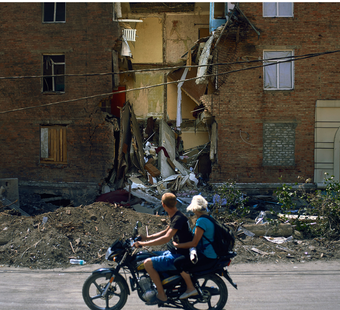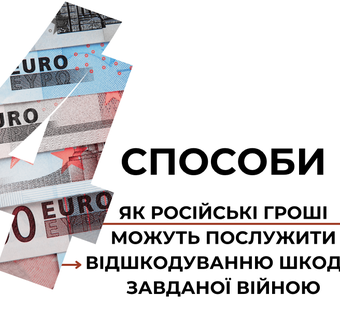The possible scenarios of seizure of Russian sovereigh assets
*This analytics is published in English only


The options of seizing state assets of Russia and using them to help Ukraine have been actively discussed between Ukraine and its partners. Some of the Ukrainian allies consider that procedure of confiscation should be established by national law. For instance, in June 2022, the Parliament of Canada adopted Bill C-19 by which it made it possible to confiscate assets of foreign states, persons and companies through the mixed administrative and court procedure. The U.S. legislation already contains administrative tools for the President to block, seize and dispose of the hostile country’s assets, as well as respective procedural provisions. However there are significant challenges which will require legislative amendments. Nevertheless, forfeiture of Russian sovereign assets just through national laws would be a grave violation of international customary law, which absolutely protects the immunity of states and their property from actions of other states. Not all the states, where such assets are held, may afford themselves to act the same away as the USA and Canada do, moreover, this may lead to undermining international law as recognized mechanism of regulation and even to finding Russia as a victim of hostile actions.
This document is a research of the possible mechanisms of Russian sovereign assets’ confiscation. We also tried to determine the most effective way and legal framework of confiscation which would not sacrifice the existing international legal order.
Publisher: think tank "Institute of Legislative Ideas"
Authors: Tetiana Khutor, Andrii Mikheiev
Summary

Summary

The options of seizing state assets of Russia and using them to help Ukraine have been actively discussed between Ukraine and its partners. Some of the Ukrainian allies consider that procedure of confiscation should be established by national law. For instance, in June 2022, the Parliament of Canada adopted Bill C-19 by which it made it possible to confiscate assets of foreign states, persons and companies through the mixed administrative and court procedure. The U.S. legislation already contains administrative tools for blocking, seizing and disposal of the hostile country’s assets by the President but based on some conditions which may not be currently fulfilled. Meanwhile the U.S. laws regulating court procedure provide that generally the foreign state shall have the immunity from court consideration, unless some exceptions apply, but strongly protect the property of foreign central banks from seizure due to court decisions. Therefore, a lot of legislative amendments are still necessary.
However, such national laws directly violate international customary law according to which states and their property have the immunity from court and, arguably, other procedures of other states. In 2012 the UN International Court of Justice (ICJ) even ruled that violation of imperative rules of international law may not be the ground for depriving the state and its property of immunity by any national court. While the USA and Canada due to their leading positions in international relations, law systems etc., may afford themselves to settle such problems through national legislation, it would be much more difficult for other states where Russian sovereign assets are placed. For instance, Basic Law of Germany provides that the rules of international law are mandatory for Germany and prevail over national legislation which will, on the one hand, prevent it from adopting respective national law and, on the other hand, give basis to block implementation of any respective EU decision (given the uncertain position of the country regarding Russia). International law still remains the universally recognized set of rules which is actively used by Ukraine and its allies to qualify Russian actions as grave violations and condemn them and in order to seek justice in international institutions like ICJ. Therefore, neglecting international law would undermine all the efforts and mechanisms which still may be used against Russia.
Moreover, if Russian assets are confiscated in violation of international law, it will provide Russia the basis for challenging such measures in ICJ and, somehow, legitimize its position as a state which suffered from internationally wrongful acts of other states. Therefore, the effective measures should be taken in line with international law and in a manner which would best serve the interests of Ukraine and its allies.
Any international custom as a source of international law is not a constant rule. It depends on state practice and belief of states that they act in line with law based on solid justification. In case as many states as possible sign a multilateral agreement with participation of Ukraine, establishing basis and mechanism of confiscating and distributing Russian assets, the new international custom shall be established which shall overcome the principle of absolute sovereign immunity in a legitimate way.
After Russian Federation committed its hostile and unjustified invasion into Ukrainian territories, the vast majority of states which have real influence in the modern world, unambiguously condemned its aggression and took immediate measures. Despite its hostile and uncivilized measures, Russia remained (and continues to remain) the part of global economic and financial system and is really vulnerable to joint consolidated measures of the world biggest market players (the USA, Canada, EU, UK and other particular European countries). One of the Russian’s “Achill’s heels” in this regard are the foreign currency reserves of Russian Central Bank (RCB) which are estimated by itself in amount of USD 580 billion as of August 2022 held in foreign states, the jurisdictions of which were considered as reliable by Russian leadership earlier. Immediately, at the end of February the states which expressed their support to Ukraine and where the RCB reserves had been held, took decision on freezing such assets and currently the frozen assets are approximately estimated in amount of USD 300 billion. However, considering all the terrible losses and damages caused by Russian aggression in Ukraine, freezing is obviously not sufficient enough. According to the Ukraine’s own estimation, at least USD 750 billion would be necessary for its post-war recovery and it looks rather fair that the frozen foreign reserves of Russian Central Bank ought to be used for this purpose. The EU has already announced its official intent to elaborate the basis for seizure of the Central Bank’s assets and directing them for the purposes of Ukrainian reconstruction and Canada moved even further and has already adopted the respective law allowing to seize and dispose Russian sovereign and private assets. This paper is aimed to analyze the possible models of Russian sovereign assets’ forfeiture, their advantages and risks
contained, and to find out the best possible approach.
Chapter І

Seizure of assets through means of national legislation

The most obvious approach here is the adoption of respective national acts by the authorities of states where the Russian assets are being held on bank accounts. As was already mentioned, only Canada succeeded to adopt the respective Act to Implement Certain Provisions of the Budget Tabled in Parliament on April 7, 2022 and Other Measures or Bill C-19 (as it shall be hereinafter referred to).This large act covers the extensive number of customs, taxation and other issues, however in one of its small parts it amends Special Economic Measures Act (SEMA) and Justice for Victims of Corrupt Foreign Officials Act (Sergei Magnitsky Law) and these amendments directly concern the issue of assets’ seizure. The proposed amendments prescribe that forfeiture of assets may be applied by the authorized official “ …against certain persons in circumstances where an international organization of states or association of states of which Canada is a member calls on its members to do so, a grave breach of international peace and security has occurred, gross and systematic human rights violations have been committed in a foreign state or acts of significant corruption involving a national of a foreign state have been committed". The proposed Para. 5.2. of the Section 5 of SEMA provides that the term ‘person’ shall explicitly include a foreign state, so no speculations may arise regarding the applicability of this act to property of states. Moreover, C-19 explicitly provides that “ … any property situated in Canada that is owned — or that is held or controlled, directly or indirectly... by a foreign state” may be caused to be seized or restrained by order, thus, no special treatment is established between states and private persons in this law. C-19 provides the broad definition of the property which may be seized through the proposed procedure which includes “ …any type of property, whether real or personal or immovable or movable, or tangible or intangible or corporeal or incorporeal, and includes money, funds, currency, digital assets and virtual currency… ” which definitely means all the property.
C -19 envisages that seizure of property shall be provided through the mixed administrative and judicial procedure with all the possible procedural guarantees of parties observed. After the respective order on seizure is made by the Governor in Council (which includes Prime-Minister and the Cabinet), the respective Minister responsible for administration of this order shall file an application to the superior court of the province where such property is located. The court shall take its decision (order) based on evidence and provided the notice on hearing is given to any person having an interest in or right to the property (in court’s opinion) and such person shall have the right to be present at the court’s hearing. However, such categories of persons as foreign states and nationals of such foreign states who do not ordinarily live in Canada shall be deprived of the right to apply that their interest or right is not affected by the forfeiture. After the property is seized and the proceeds are transferred to the so-called Proceeds Account, therespective minister (upon consultation with the Minister of Finance and Minister of Foreign Affairs) shall pay out the amounts which do not exceed the net proceedings from this property but only for the restricted number of purposes such as: 1) the reconstruction of a foreign state adversely affected by a grave breach of international peace and security; 2) the restoration of international peace and security and 3) the compensation of victims of a grave breach of international peace and security, gross and systematic human rights violations or acts of significant corruption etc. It is worth mentioning that C-19 is not country - based and Ukraine is not explicitly stipulated there, so it shall be deemed as a universal mechanism which may be applied regarding any other country, currently and in future, upon government’s consideration.
The effective U.S. legislation also provides for the general tools of freezing and seizure of assets. The 1977 International Emergency Economic Powers Act (IEEPA), 2001 USA Patriot Act (UPA) and 1917 Trading with Enemy Act (TWEA) prescribe the exceptional authorities of the U.S. President in case of “any unusual and extraordinary threat, which has its source in whole or substantial part outside the United States to the national security, foreign policy, or economy of the United States” and pursuant to which the President may prohibit and block the usage of any property and transactions regarding it (sections 202, 203 of the IEEPA (50 U.S. Code §§ 1701, 1702).
The respective authorities to prohibit any possible transactions regarding the property have already been invoked by President Biden in his Executive Order of April 15, 2021 related to the property of Government of Russia (which in broader sense means also any Russian political institutions including Central Bank) and persons engaged with specific activities with it. Another example of executing such authorities is the Executive Order of February 11, 2022 dealing with blockage of USD 7 billion currency reserves of the Da Afghanistan Bank for the future aid to the people of Afghanistan and compensations for suffered from the 9/11 and other terroristic attacks. However, according to the IEEPA and respective provisions of the UPA, the explicit authority of the President to confiscate as well as administer, liquidate, sell or dispose otherwise the property of any foreign state, national of organization may be executed on condition when the United States is “ …engaged in armed hostilities or has been attacked by a foreign country or foreign nationals” which can hardly be applied to the situation with Russian armed aggression in Ukraine where the USA is not officially involved as the party. The TWEA of 1917 which may be possibly applied here in more direct way is considered, however, by the prominent experts as an “an ancient statute” which does not take into account all the peculiarities of modern international conflicts and international policy. President Biden and his administration obviously think the same and are currently calling the Congress to update the existing statutes in order to ensure seizure of Russian government and private assets and transfer the proceeds from them to Ukraine. However, we must admit that the analyzed acts prescribe exclusively administrative (executive) procedure within the powers of the President and the legislation regulating court procedure imposes different rules and restrictions. The 1976 Foreign Sovereign Immunities Act (FSIA) s establishes general immunities of states and its property from the court jurisdiction and envisages the exhaustive list of exceptions from the immunities. Nevertheless, section 1611 of chapter 97 of the U.S. Code imposed by the FSIA explicitly protects the property of central banks from execution despite any exceptions form the immunity (which means that according to the general rules court decisions and orders may be taken regarding such states by the property of their central banks but may not be
executed).
Risks and disadvantages of the approach: Unfortunately, the approach of the USA and even Canada may not be considered as universal and applicable for all other states. These states (especially the USA) have unique leading positions in the world which practically allows them to solve problems like this exclusively by means of national legislation without ensuring adherence to international law. However, the majority of frozen Russian government assets are not located in the USA or Canada but in a bunch of other countries. As of March 2022, USD 71 billion of Russian Central Bank’s reserves have been frozen in France, USD 58 billion frozen assets were placed in Japan, USD 55 billion have been held in Germany etc, while only USD 38 billion were reported frozen in the USA and USD 16 billion were indicated as held in Canada. These other states which have much more RCB reserves in their disposal, due to the peculiarities of their positions within the system of international relations and peculiarities of their law systems, are not likely to apply the U.S. or Canadian approach with the same level of efficiency, ignoring the existing requirements of national and international law.
The sovereign immunity of states and their property which originated from the general principle par in parem non habet imperium, is one of the cornerstones of the customary international law, apllied by numerous decisions of international tribunals and which has almost became universally binding conventional rule due to the 2004 UN Convention on Jurisdictional Immunity of States and their Property (which, however, lacked 9 ratifications from the mandatory 30 to enter into force). Moreover, even considering confiscation of sovereign assets as the form of responsibility for the internationally wrongful acts or measures inducing to take such a responsibility, the international law imposes clear conditions and restrictions in this regard. In 2001 the UN General Assembly adopted Resolution No. 56/83 which enacted Draft Articles on Responsibility of States for Internationally Wrongful Acts (ARSIWA) which, despite its non- binding nature are considered as the authoritative source of international customary law and are often applicable by international tribunals including the UN International Court of Justice (ICJ). ARSIWA establishes that, certainly, the state violating its international obligation shall face legal consequences for it and be obliged to make full reparation for the injury caused (Article 31). Moreover, it entitles the injured state as well as other states (Article 48 of ARSIWA) upon certain conditions to invoke the responsibility of such state and apply countermeasures to induce the violating state to cease the breach of international obligation and take the prescribed responsibility (Articles 49, 54). However, ARSIWA also establishes clear restrictions for implementation of such countermeasures: the responsible state should be notified of the intention to apply the countermeasures against it and be offered negotiations; such countermeasures may not be taken if the violation had been ceased or the dispute is pending before a court or tribunal which has the authority to make decisions binding on the parties (Article 52). Moreover, such countermeasures shall anyway be temporary and terminated as soon as the responsible State has complied with its obligations under ARSIWA (Article 53). Therefore, irrevocable seizure and disposal of such Russian assets as well as transfer of proceeds from them for the purposes of Ukrainian reconstruction would be in breach of customary international law. The prominent legal experts raised their concerns even regarding Canadian Bill C -19, stating that it would violate international law, including ARSIWA provisions, if adopted, and create dangerous precedents.
As for the EU member states, the non-correspondence of perspective laws on forfeiture of assets to the international law may create significant problems for their implementation. The effective EU principles of common foreign and security policy allow EU only to apply sanctions of non-punitive and preventive nature under Article 29 of the Treaty on European Union and the frozen funds and economic resourses may not be accessed, moved or sold. Therefore, this decision shall be up to each particular member state and their approaches may differ as well as their law system may contain legal complications. For instance, Article 25 of German Basic Law (Constitution) provides that the general rules of international law (which includes customary law) shall be an integral part of federal law and take precedence over the national laws. Even, if the general EU approach on sanctions against states and their immunities is changed, there may be no guarantees that such states as Germany shall unconditionally apply it. Despite the general principle of prevalence of the EU law over national laws established in the opinion of the European Court of Justice (ECJ) in Costa vs. ENEL,. nothing prevents the Constitutional Court of Germany from finding the respective EU act as non-corresponding to the standards established by its Basic Law as it has already done in its Seminal Order of December 15, 2015 also called by some experts as Solange III, where the Constitutional Court denied the court’s decision on application of the European Arrest Warrant. Considering the complex nature of German – Russian relations and statements and behavior of German high officials regarding joint Western efforts on sanctioning Russia, such a scenario seems to be very believable. Moreover, during the last decade the tendency seems to be established when the constitutional courts of the EU member states
confront EU acts regarding their incompliance with national constitutions and prevailing nature of their Constitutions over the EU acts.
Moreover, there exists one more risk related to violation of the international customary law in part of abrogating state’s sovereign immunity by national acts. In one of its rather recent decisions Jurisdictional Immunities of States (German vs. Italy: Greece intervening) (2012) the ICJ ruled that the sovereign immunities of states may be not overcome even in case of violation by the state of jus cogens rules of international law (which were definitely violated by Germany during 1943-1945), thus all the court decisions violating sovereign immunity of state and its property must be held unenforceable. Moreover, ICJ even found Italy, the courts of which took decisions against Germany and its property, as a state which committed the internationally wrongful act under ARSIWA and is subject to the responsibility prescribed by this act: cessation of actions and reparations in form of restitution (reversing of all the court decisions taken). This creates a dangerous precedent, as Russia which has also conducted grave violations of jus cogens rules has the real perspective of successful challenging of national measures, taken against its sovereign property through the court proceedings, to the ICJ (for example application of C-19). Certainly, there arises the issue of ICJ jurisdiction. Nevertheless, for such states which recognized the compulsory jurisdiction of ICJ ipso facto according to Art. 36 (2) of the ICJ Statute (which includes Canada, the UK, Netherlands etc.), the scenario when ICJ recognizes its jurisdiction in disputes against such states is very likely.Since Ukraine has been seeking justice in ICJ within the case Allegations of Genocide under the Convention on the Prevention and Punishment of the Crime of Genocide (Ukraine v. Russian Federation) such perspectives of the ICJ rulings against anti-Russian measures of other states may completely nullify any possible Ukrainian achievements in this and other cases or even deteriorate Ukrainian position from the legal viewpoint as even in case of ICJ’s ruling in favor of Ukraine, the perspectives of payment of compensations by Russia look almost unreal.
Some experts believe that the customary rule of sovereign immunity in the international law explicitly concerns only jurisdictional immunities from court procedures, therefore, administrative (executional) procedure of confiscation may not be considered as violating sovereign immunities. The logic of the U.S. legislation (mentioned IEEPA, UPA and TWEA) is also built upon the respective administrative actions of the U.S. President on blocking, seizure and distribution of assets. Nevertheless, we believe it is arguable that according to the merits of the state sovereign immunity rule comprised in par in parem general principle, it shall be normally interpreted by the international community as a whole and by the UN authorities, that while the state and its property are generally immune from the court procedure with competition of parties and procedural guarantees established, such immunity shall not be normally applied with respect to the plain administrative execution conducted upon unilateral consideration of the respective authority.
To sum up, the actions of Ukrainian allies against sovereign assets of Russia based solely on national legislation are certainly possible provided the political will of such states is expressed and joint consent is reached. However, this will bear the risks of contradiction with the existing international law, undermining its meaning, establishing ambiguous international practices and weakening positions of Ukraine and other states regarding reference to the grave violations of international law by Russia, as such national measures of Ukraine and its allies will be certainly considered as violating it as well. We understand that the current situation and priorities of Ukraine and its allies may require drastic approaches and novations but it would be much better to find such solutions which will not be in such a direct contradiction with the existing international law, if possible.
Chapter ІІ

Concluding international multilateral treaty

The option of concluding between Ukraine and its international partners of the multilateral international agreement establishing the joint consent of parties to impose measures against Russia and the clear mechanism of their implementation, is already being considered as efficient and discussed with the Ukrainian authorities. Moreover, the President of Ukraine in his Address to international partners as of 20 May 2022 invited partners to join efforts on drafting the respective multilateral agreement and establishing the respective fund on reconstruction of Ukraine as well as international claims commission, taking the decision upon the lawsuit of states and individuals and deciding on distribution of seized assets.
Establishing such commissions is based on real historical precedents, including the United Nations Compensation Commission (UNCC) established in 1991 under the UN Security Council Resolution No. 687, the Eritrea-Ethiopia Claims Commission (EECC) established in 2000 according to the Algiers Agreement, and the Iran-United States Claims Tribunal (IUSCT) established in 1981 according to the Algerian Claims Settlement Declaration which the USA and Iran acknowledged as binding. However, we must note that any possible commission which may be established by such a multilateral agreement shall significantly differ by its nature from commissions, which had already been established, the new commission shall be unprecedented by its nature. While the IUSCT and EECC were established as bodies considering claims on the arbitration basis between two conflicting states and awarding compensations to both parties, the UNCC was successful based on the consent of Iraq to pay the established percentage from the profits from oil exports to the respective fund (which could not but be provided considering the universal status of the UNCC established according to the UN Security Council authorities under Chapter VII of the UN Charter and perspective global consequences for Iraq for not executing the UNCC decisions).
However, despite the perfect legal nature of international claims commission and the proven record of their success, certain disadvantages of this model appear. First, considering the huge unprecedented amount of Ukrainian losses and damages and needs for its reconstruction estimated in amount of USD 750 billion (which may certainly increase), the issue of whether all the seized Russian assets are sufficient enough even for Ukraine only arises. However, the model of establishing of the body considering claims obviously provides for the broad range of claimants. Prominent experts propose to envisage that all states and natural and legal persons regardless of the nationalities, who suffered losses from Russian aggression in Ukraine under international law as well as claims arising from investments, contracts, expropriations, or other measures affecting property rights should be entitled to claim for compensation from Russian assets. Therefore, all the family members of the U.S. citizens and other foreigners, killed in Ukraine, companies which suffered economic losses because of this war, even Russian opposition activists who claim themselves as suffered because of anti-war position as well as foreign states which have already allocated sufficient funds to help Ukraine and suffered losses as well, shall have the right to claim for Russian assets and this will certainly dissolve the Ukrainian share and postpone (or even block) the reconstruction for years. Of course, we may not insist that all the forfeited Russian assets shall be transferred only to Ukraine as a lot of honorable partners have already allocated significant funds to help Ukraine and they deserve to receive compensations for it as well. However, in order to ensure the effective reconstruction of Ukraine as a main victim of Russian invasion, the priority of Ukraine’s claims should be explicitly established in the text of treaty. Considering the nature of such commission, observing, satisfying or rejecting claims, we cannot see how it could be possible to implement.
Secondly, the extended timeframes of the process may become the real issue here. For instance, for the UNCC it took 31 years from the moment of establishment to finish the process of considering all claims and their execution (the last payment was made in January 2022). We certainly understand that the process of seizure and distribution of Russian assets shall not be as fast as we would desire but needs of Ukraine and Ukrainians, who suffered from this terrific war are urgent.
Therefore, we consider that the establishment of claims commission by multilateral treaty should not be the only available option here. Such a treaty might alternatively stipulate the model of direct transfer of seized Russian assets to Ukraine or to the established international fund which shall subsequently distribute such assets to Ukraine and other suffered states- parties to the agreement according to the proportion specifically embodied in the text of the treaty. The procedure of subsequent compensation for claims of natural persons and legal entities shall be regulated by the national legislation. In order to ensure the transparency of distribution of such funds within each country and mitigation of corruption risks, such treaty may also prescribe reporting and supervisory mechanisms binding for each state.
Another important issue, which should be resolved by such treaty and which makes this approach more preferrable than just adoption of respective national laws, is the establishment of the new international custom overriding the absolute sovereign immunity of state’s property and their central bank’s assets in particular. The international custom is not a constant source of international law, it is based on connection of actual behavior of states in the particular matter (state practice) and belief of such states that they act as required or permitted by international law (opinio juris). Once the state practice changes as well as their opinio juris, the new international custom is established. Therefore, in order to provide sufficient basis to establish the new international custom according to which the sovereign immunity of states and their property may be limited, such treaty shall contain the explicit list of reasons for such measures with direct reference to the violations of international law committed by Russia, such as: violation of jus cogens rules of international law (Article 2 (4) of the UN Charter, rules of international humanitarian law, rules of international human rights law), violation of the ICJ preliminary order to immediately suspend the military operations that it commenced on 24 February 2022 in the territory of Ukraine etc. Of course, the best option for establishment of this new international custom would be concluding this multilateral treaty under the auspices of the UN General Assembly between all the 141 states which voted for the Resolution of the UN General Assembly of March 2, 2022 “Aggression against Ukraine” according to the “Uniting for Peace Procedure” (procedure envisaged by the UN GA Resolution 377 (V) which establishes that in case the Security Council fails to exercise its primary responsibility for the maintenance of peace and security, because of a lack of unanimity of the permanent members, the General Assembly can take over from the Council by convening in an emergency special session and it can make appropriate recommendations to Members for collective measures).However, such a scenario is highly unlikely as being involved into specific process of seizing other state’s assets is not the same than general condemnation of aggression and other obvious violations of international law. In our opinion the joint consent of the major players within the system of international relations as well as other states holding the most sufficient amount of Russian assets (‘specially affected states’) would be enough to establish the new state practice and formulate the new opinio juris.
Of course, we may not but stress certain risks and disadvantages of scenario with concluding international multilateral treaty. First, this may take significant amount of time to negotiate the terms, elaborate the unified position and receipt of consent of each party. Moreover, significant time hshall be spent on harmonization of the treaty with the national law (ratification and amending all the respective laws and bylaws for proper implementation of the law). However, speed here is more a political issue which may not be solved by any proposed legal means.
We also may not by allege the possible scenario when Russia and its allies (Armenia, Syria, Venezuela etc) also sign such a treaty providing distorted justification according to the international law and starts to forfeit the property of Ukrainian allies. In case the treaty between Ukraine and other countries is not global and universal, it would take significant efforts to establish the legal difference between pro-Ukrainian and pro-Russian treaties. The problems may be then decided exclusively by political means and change the existing international status quo.
Chapter ІІІ

Concluding international bilateral agreements

The option of concluding by Ukraine of a bunch of bilateral agreements with different states on seizure and distribution of Russian sovereign assets is possible but, in our, opinion may not be considered as equal to other options analyzed herein. From the viewpoint of international law, consensus of two states on seizure and distribution of other states’ property is not likely to be considered enough to establish the new international custom overcoming the universal rule of sovereign immunity and such agreements may be afterwards successfully challenged by Russia to ICJ. However, bilateral agreements may be used for other purposes. The mechanisms of national laws are unlikely to properly regulate all the peculiarities of delivery and acceptance of seized assets and it will require Ukraine and its allies to ensure compliance with each other’s legislation. For instance, section 7.1 of SEMA proposed by C-19 directly requires from the Minister of Foreign Affairs of Canada to enter into and agreement with the government of any foreign state in this regard. In case the multilateral treaty is concluded, it would be extremely complicated to accord all the peculiarities of the national law systems of states-parties regarding the process of transferring, delivery and acceptance procedure, types, amount of assets seized. However, this option is considerable strictly in case the treaty is based on direct transferring of forfeited assets to Ukraine without establishment of international institution as a mediator.
Conclusion

Conclusion

After analysis of the possible scenarios of confiscating Russian assets in the territory of states, where they are held (especially RCB currency reserves) we came to the conclusion that certain risks and disadvantages are related to all the proposed models. However, their correlation is not equal. When making the respective decision, Ukraine and its allies should take into account that existing international law still remains the universally recognized and applicable set of rules and contains mechanisms the majority of states still rely on. Except such states as USA and Canada, which are the global leaders and may resolve such issues due to the peculiarities of their law systems, other states may not oppose international law and should legally bring their measures in line with it. Therefore, we believe that signing the multilateral international treaty will better ensure the efficiency of permanent seizure of assets and legitimacy of the process according to the international law as well as help to overcome the universally recognized international customary rule on sovereign immunities of states. The perspective mechanism which may be established by such a treaty may differ, as well as its nature global or with restricted amount of parties, however it shall be more legitimate than taking measures exclusively based on internal sovereign will of particular states. Anyway, performance of respective procedures at the national level will require its implementation to the national legislation including elaboration of new acts and/or amending the existing ones. Therefore, such a model should not be deemed as opposing to another approach stipulated in this paper but as supplementing and extending it. Moreover, in order to avoid years of negotiations and debates between parties, the multilateral treaty may be concluded as the framework agreement while the specific issues of distributing and transferring such assets between Ukraine and other states may be regulated by bilateral agreements provided they do not contradict the general framework treaty (of course if the multilateral treaty does not provide for establishment of international authority acting as a mediator). In this case all the proposed models may be applied simultaneously as a unified hybrid approach.


















